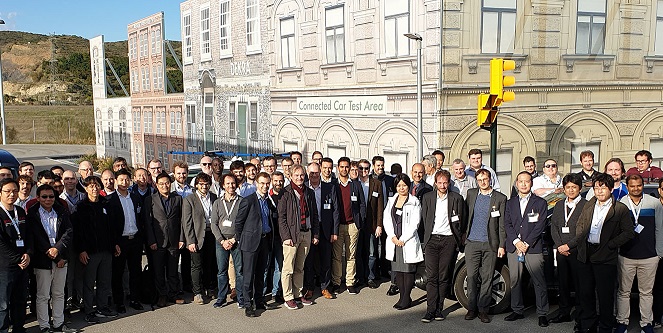The ETSI Industry Specification Group (ISG) for Network Functions Virtualisation (NFV) has started working on its next specification release, known as Release 4. While NFV-based deployments are expanding worldwide and show the benefits of network function virtualization, new technologies are expected to be leveraged and features are being added in support of 5G and novel fixed access network deployments that are emerging in many countries.
Release 4 addresses several new issues in the following technical areas: the evolution of the NFV framework to support the most recent cloud, software, and virtualization techniques; novel management architectural styles and operationalization aspects, leveraging virtualization characteristics to simplify deployments; and increased support for automation. While the ETSI ISG NFV is transitioning into the new release, the group will also continue the maintenance of Release 2 specifications, dealing with implementable protocol and data models, as well as their counterpart testing specifications to the end of 2019 and into 2020.
The first ETSI C-V2X Plugtests, performed in partnership with 5GAA, came to a close with a success rate of 95% of the executed tests, showing an extremely positive level of multi-vendor interoperability. 320 test scenarios were executed in lab and field environments for interoperability with 70 people present onsite for testing.
This event enabled vendors to run test sessions to assess the level of interoperability of their implementation and validate the understanding of the ETSI TC ITS and 3GPP standards. The ETSI 5GAA joint workshop which was organized in parallel, addressed C-V2X interoperability and deployment. Leading speakers from the European Commission, the Dutch Ministry of Infrastructure and Global Certification Forum presented the latest updates on ITS deployments and certifications. This week-long face to face PlugtestsTM , provided an opportunity to test C-V2X devices. Field interoperability testing included road hazard signalling, road works warning, longitudinal collision risk warning and intersection collision risk warning.
ERTICO – ITS Europe and 5G Infrastructure Association (5G IA) has signed a Memorandum of Understanding (MoU) to facilitate the roll out of Intelligent Transport Systems and Services (ITS) supported by a secure and trustworthy 5G communication network in Europe. The mission of 5G IA is to create the next generation of communication networks and services. Ubiquitous connectivity will enable the European industry to successfully compete on global markets, open up new innovation opportunities and facilitate the creation of new services to the benefit of the society, including for mobility.
The mission of ERTICO is to deploy by 2030 greater and safer automation and connectivity, ensuring the rollout of systems that monitor and manage traffic of vehicles carrying people and goods, providing direct control on them.
ETSI has announced two major specifications from the ETSI Zero-touch network and Service Management (ZSM) Industry Specification Group. ETSI GS ZSM 001 describes ZSM Requirements and ETSI GS ZSM 002 defines the ZSM Reference Architecture. The glossary of terms and concepts related to ZSM is provided in ETSI GS ZSM 007 that was published along with these specifications.
ETSI GS ZSM 001 examines various business-oriented scenarios and the related automation challenges faced by operators and other industry sectors, and defines the architectural, functional and operational requirements for end-to-end network and service automation. The ZSM architecture specified in ETSI GS ZSM 002 was designed to satisfy these requirements. The architecture is modular, flexible, scalable, extensible and service-based. It is designed for closed-loop automation and optimized for data-driven machine learning and artificial intelligence algorithms.
ETSI TC Smart Card Platform, that standardized the former generations of SIM cards, has been working on a brand-new security platform called Smart Secure Platform (SSP). The ETSI committee has unveiled the first three technical specifications to launch this new security platform.
The ETSI Smart Secure Platform offers an open platform for multiple applications with various physical interfaces and form factors. The new flexible file system and built-in capabilities support several authentication methods, as well as features defined for a UICC - the current security platform used, for instance, for the SIM card - such as a toolkit or a contactless interface. SSP is a highly secure, scalable, thus cost-efficient solution optimized to fit many requirements, from IoT applications to complex solutions, hosting several applications such as banking and payment, ID management and access to mobile networks. Furthermore, the SSP is backwards compatible to the UICC. The three specifications cover the general technical characteristics of the Smart Secure Platform with ETSI TS 103 666?1, the integration of the Secure Element into a System on Chip (SoC) solution in ETSI TS 103 666?2 and, as the first protocol between the Smart Secure Platform and the outside world, the Serial Peripheral Interface (SPI) which is specified in ETSI TS 103 713.










